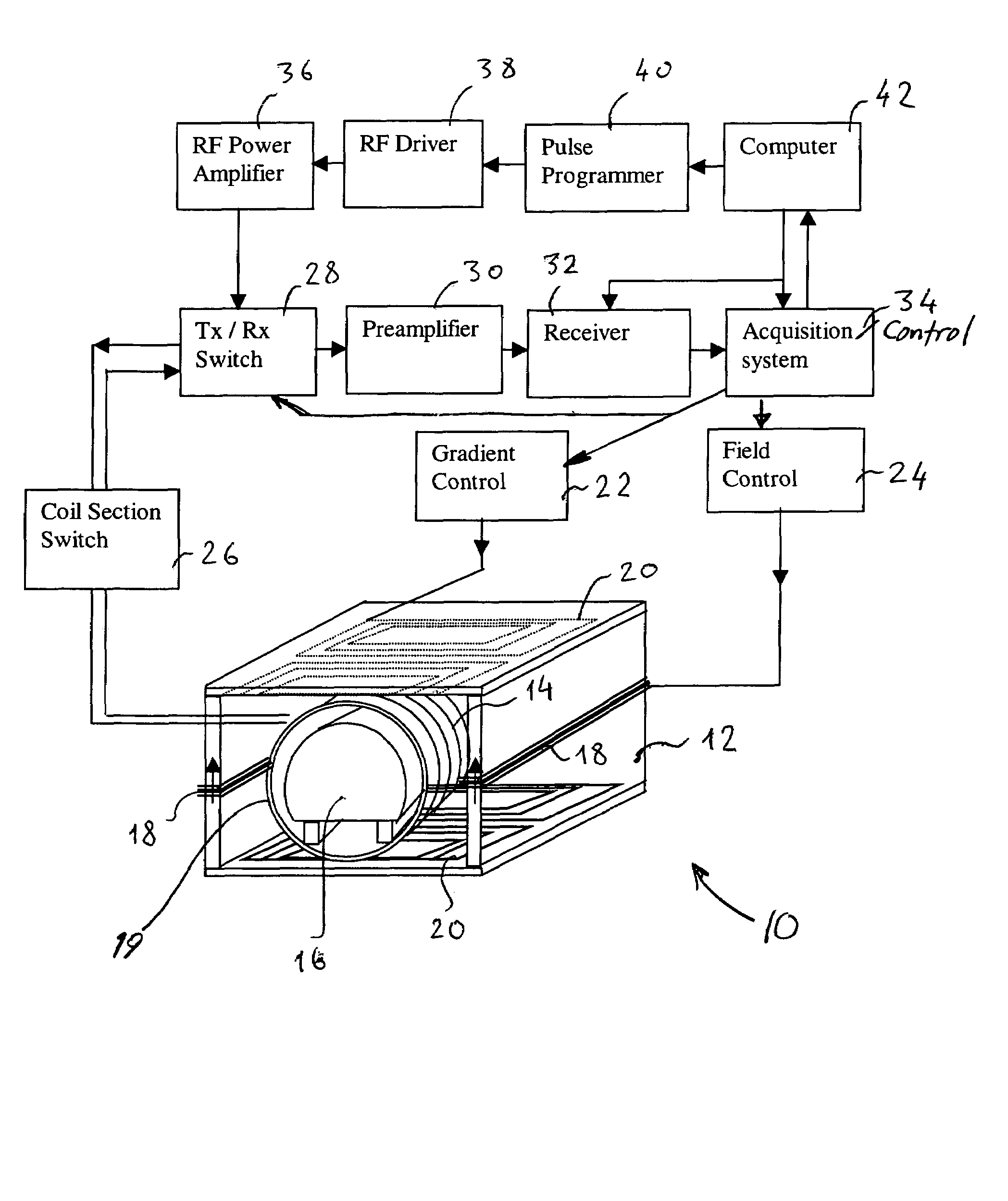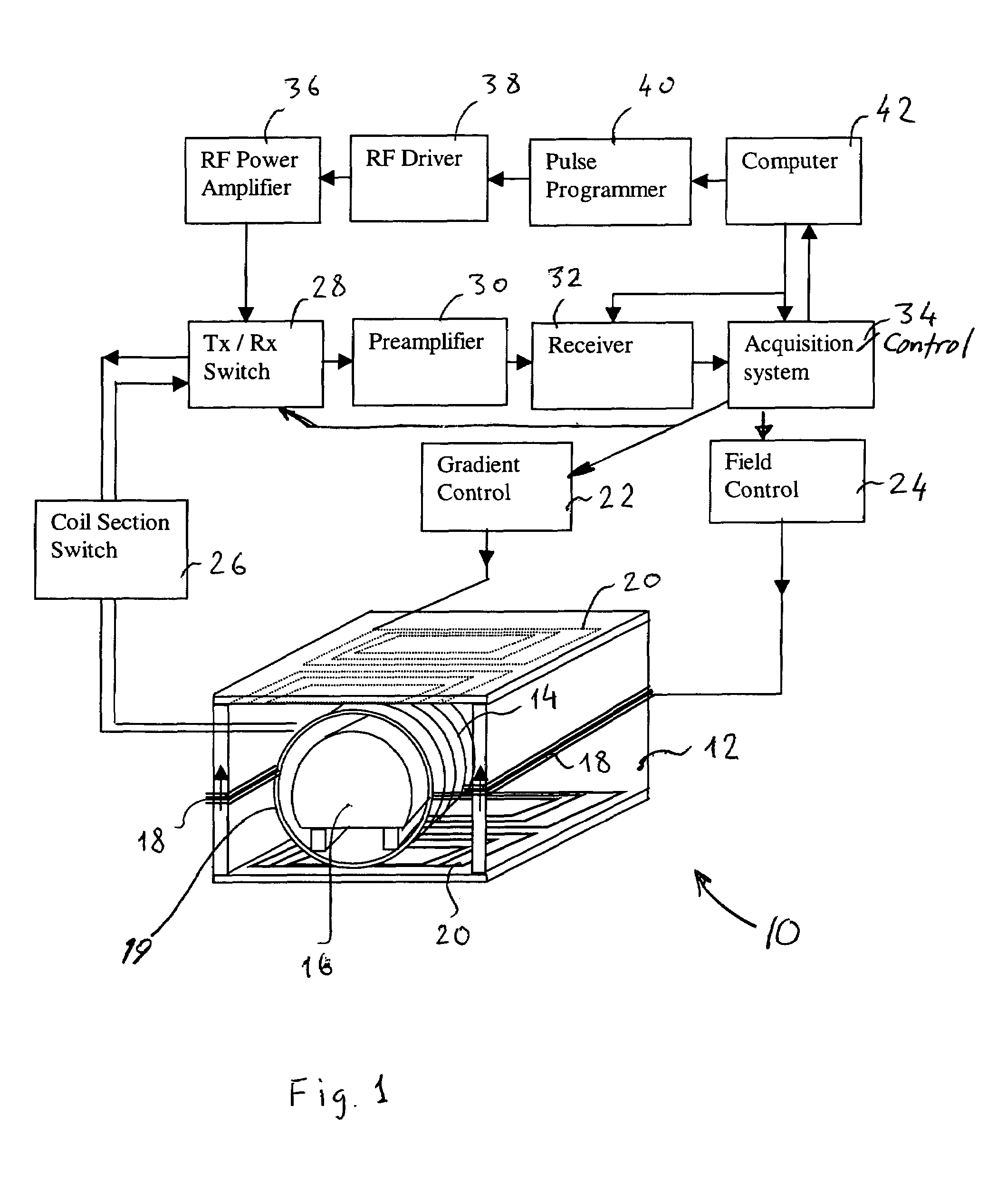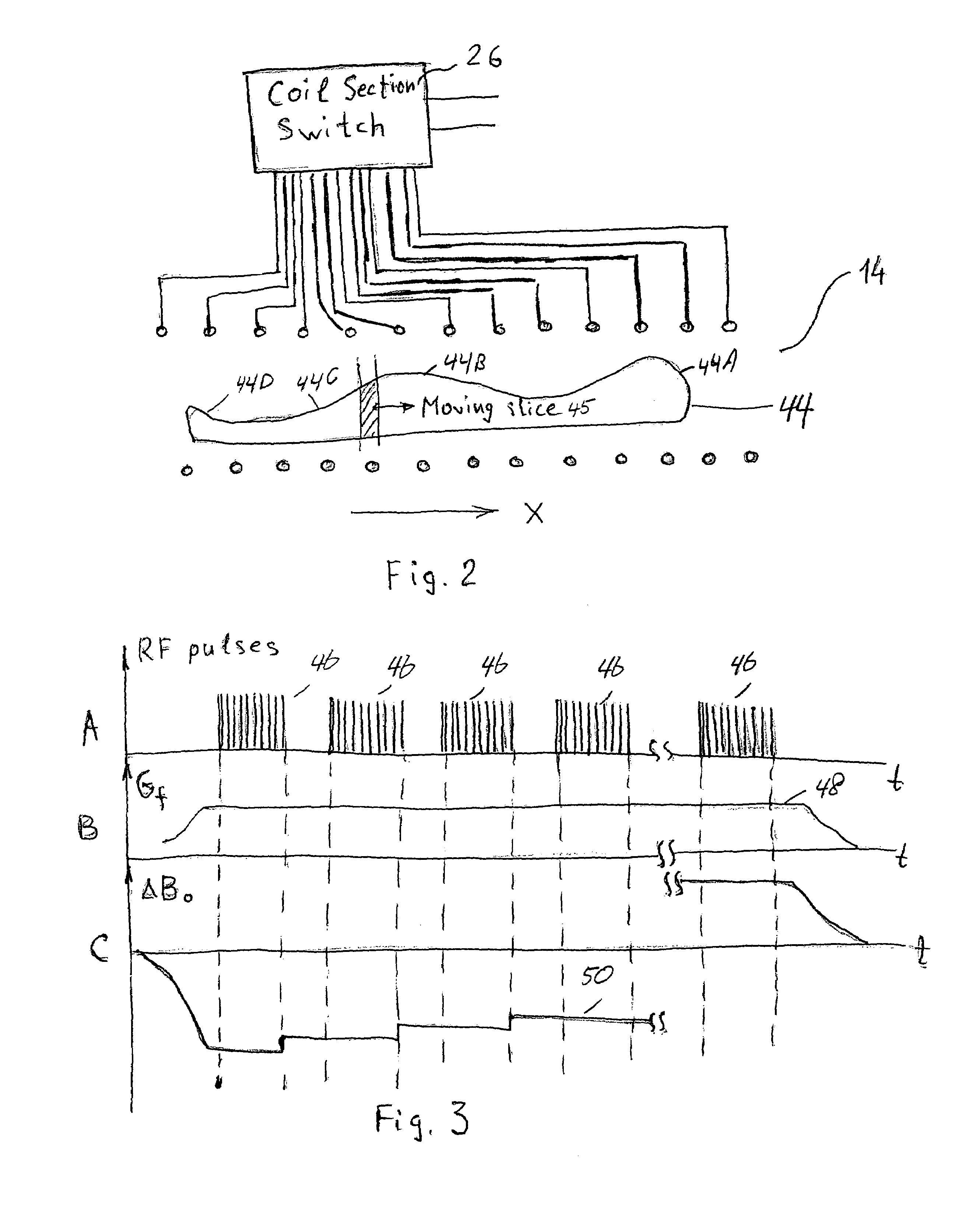Magnetic resonance imaging method and apparatus for body composition analysis
a magnetic resonance imaging and body composition technology, applied in the field of nuclear magnetic resonance (nmr) and magnetic resonance imaging (mri) apparatus and methods, can solve the problems of limited use, inability to accurately measure in individuals with cardiovascular or pulmonary disorders, elderly, young children, and very obese subjects, and may cause substantial errors due to body movemen
- Summary
- Abstract
- Description
- Claims
- Application Information
AI Technical Summary
Benefits of technology
Problems solved by technology
Method used
Image
Examples
Embodiment Construction
[0042]Systems and methods according to the invention perform one of two general techniques of body composition analysis. Each technique includes some form of localization of nuclear magnetic resonance measurement to within a selected portion of the body being analyzed, and subsequent composition analysis of the body portion from the nuclear magnetic resonance measurements so localized. In one technique, the body is first imaged in one dimension with respect to a nuclear magnetic resonance property to determine the location of selected body components, such as the head, torso, legs, abdomen, etc. Next, nuclear magnetic resonance measurements are made within one or more of the selected body portions by localizing the nuclear magnetic resonance signal excitation and detection to within the one or more selected body components. Finally, the composition of the one or more selected body components is determined from the nuclear magnetic resonance measurements.
[0043]In another technique, n...
PUM
 Login to View More
Login to View More Abstract
Description
Claims
Application Information
 Login to View More
Login to View More - R&D
- Intellectual Property
- Life Sciences
- Materials
- Tech Scout
- Unparalleled Data Quality
- Higher Quality Content
- 60% Fewer Hallucinations
Browse by: Latest US Patents, China's latest patents, Technical Efficacy Thesaurus, Application Domain, Technology Topic, Popular Technical Reports.
© 2025 PatSnap. All rights reserved.Legal|Privacy policy|Modern Slavery Act Transparency Statement|Sitemap|About US| Contact US: help@patsnap.com



